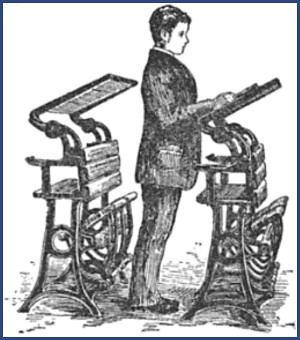Plastic Diaphragm Check Valves – Check Valves Part II
Check Valves September 9, 2015Plastic diaphragm check valves are widely used
In my previous post about check valves, I provided a brief overview of check valves. Continuing on that subject, what I want to talk about next is a very pragmatic type of check valve used for miniature pneumatic and fluidics flow control – the plastic diaphragm check valve. Diaphragm check valves are widely used because they are effective and economical. They are also considered to be highly adaptable because of their design characteristics. In this post, I will provide a broad outline of ...

Custom Fittings, Assemblies, Kitting and Your Bottom Line
Custom Services July 28, 2015Value-added services improve quality while adding efficiency and reducing costs
Custom fittings, small production run tubing assemblies, medical sub-assemblies, bagging and clean room repackaging all have important roles in process budgeting, planning and design. Many manufacturers, distributors and value-added contract manufacturers offer these services. In this post, I will outline the importance of services like customized fittings, sub-assemblies, medical sub-assemblies, and clean room and industrial repackaging with an emphasis on ...

Checking Out Check Valves – An Introduction
Check Valves July 28, 2015Check valves are mostly invisible in everyday applications but are critical for flow control
Introduction
Check valves, non-return or one-way valves, allow liquid or air to flow in only one direction. Manufacturers make them in a wide range of sizes and types. Tremendous varieties of applications use them to prevent costly or even dangerous backflow. Even though they are widely used for everyday applications, the how and why of check valve operation is not always ...

There is More to Standing Desks than Just Standing
About ISM July 7, 2015Which do you prefer – sitting or standing at your desk?
I have been using standing desks for quite a while to deal with problems I have with sitting too long. I requested an adjustable desk shortly after I started working in the ISM office. This has caught on and several other co-workers are now using standing desks as well. In this post I talk about the use of standing desks at ISM and some related health issues.
Is a standing desk the solution for you?
I wanted a desk with a height that was adjustable for either standing or sitting on a stool. The solution was a used Kesseboehmer Ergonomietechnik TMQ71 height adjustable desk. This was perfect for ...

How to Choose an Inline Filter – Physical Connections
Inline Filters June 23, 2015Inline Filter Physical Connections
There are many considerations in carefully choosing an inline filter. Common choices focus on the expected particle load and the chemical exposure. Sample tests will show that it works in the intended operating environment. However, critical options exists with the physical connections on in-line filters. This post will review connection choices for in-line filters: barbed, threaded, Luer and push-in connections.
Barbed Connections
A barbed connection has one or more ridges or barbs. This is the section of an in-line filter pushed into a tube during installation. Pushing a tube end over a barb causes it to expand and then ...

How to Choose an Inline Filter – Operating Conditions
Inline Filters May 27, 2015A look at how to match filter specs to your inline filter needs.
We all realize that it is important to select the right filter so that something doesn’t go wrong later. For example, perhaps the efficiency of flow is too low. How do you know you made the right choice? Well, we already know about chemical compatibility requirements (see my previous post, How to Choose an Inline Filter – Chemical Compatibility). Now we need to think about operating conditions. I will go over flow rate, volume of solids, operating pressure and ...

How to Choose an Inline Filter – Chemical Compatibility
Inline Filters April 30, 2015Selecting inline filters for chemical compatibility
Sometimes I feel overwhelmed when I consider how many different chemicals we encounter in our daily lives. This bleeds over into technical considerations at work. We need to know the chemical compatibility of metals and plastics. This is critical when it comes to choosing inline filters. In this post, I will go over the importance of chemical compatibility as well as some other tips to choosing components for your process.
Plastics and chemical compatibility
Chemicals can change a plastic’s physical properties. They can ...

How to Choose an Inline Filter – Mesh and Particle Size
Inline Filters April 7, 2015Filter Mesh, Microns and Inline Filter Choice
Filtration is filtration right? Well, like all things technical it is not as simple as that when it comes to particle separation. The easiest way to start thinking about inline filter choice is by looking first at filter mesh. In this post I want to give you a simple mental picture of what filter mesh or screen is and an overview of how different sizes of mesh are described.
Filtration Basics
Fishing net is basically a filter used to separate fish from water. Like fishing net, filter mesh is woven metal wire or plastic strands which stops particles that are too large from passing through openings...

How to Choose an Inline Filter – 4 Key Things to Know
Inline Filters February 23, 2015Selecting the Right Inline Filter
What happens when you set out to find the right inline filter? This is tougher when looking for a miniature filter. I always think about the one I have and go looking for another just like it. What if there is no specific example to replace? Try searching for how to choose a filter using Google. Sorting through what matters and what doesn’t is a chore.
I’m going to review some tips on how to think about filter features so you end up with more filter options with less effort. This blog refers to commercial filtration. Choosing medical filtration involves different ...

